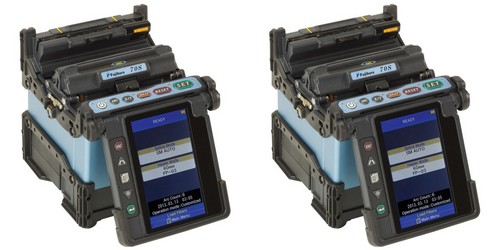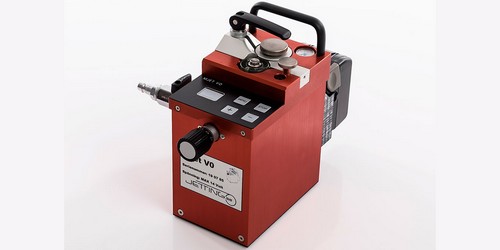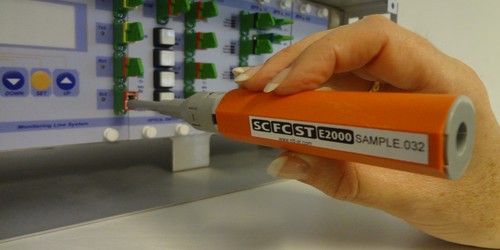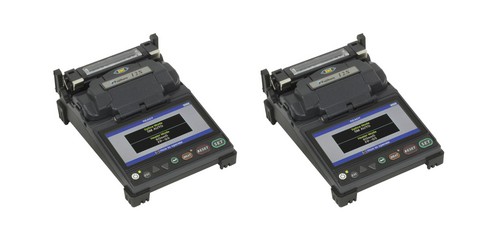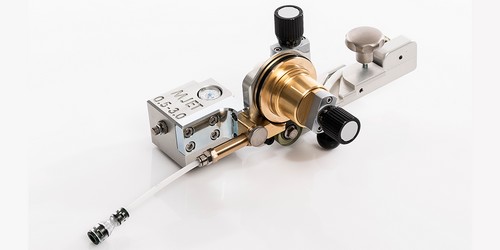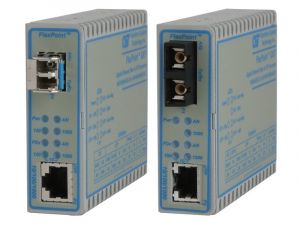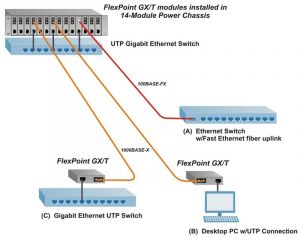FlexPoint GX/T
Jellemzők
- The FlexPoint GX/T is a 10/100/1000 copper to 100/1000* modular fiber media converter
- Conforms to 10BASE-T, 100BASE-TX, 1000BASE-T, 100BASE-FX* and 1000BASE-X specifications
- Fiber port supports multimode and single-mode fiber with ST and SC connectors and single-fiber with SC connectors
- Supports dual fiber and single-fiber 100BASE-FX or 1000BASE-X SFP transceivers for standard or CWDM wavelengths
- Both the fiber and UTP ports support auto-negotiation
- Provides Remote Fault Indicators to signal loss of link for Far-End Fault and Link Fault conditions
- UTP port supports 10/100/1000Mbps and Half/Full-Duplex
- Auto or manually configured Pause function for flow control
- Supports jumbo frames up to 10,240 bytes
- Loopback mode supports end-to-end testing
- User-selectable Link Modes for quick fault detection
- Diagnostic and DIP-switch configurations are displayed with status LEDs for quick and easy installation
- Tabletop, wall-mounted, rack-mounted in a 5-Module shelf or in a 14-Module power-redundant chassis options
- Lifetime Warranty and free 24/7 Technical Support
* 100BASE-FX is supported on SFP models only
Alkalmazás
The FlexPoint GX/T is a 10/100/1000BASE-T UTP to 1000BASE-X modular fiber media converter that supports jumbo frames up to 10,240 bytes. The GX/T features Small Form Pluggable (SFP) transceivers that support both 100BASE-FX and 1000BASE-X for interoperability with Gigabit and Fast Ethernet fiber equipment. SFP transceivers enable adaptability to different fiber types, speed and distances, and support Coarse Wave Division Multiplexing (CWDM) technology to increase the bandwidth capacity of fiber infrastructure.
The FlexPoint GX/T also supports SC and ST fixed fiber connectors for multimode, single-mode fiber; and single-mode single-fiber models are available.
Both the fiber port and the UTP port support auto-negotiation, an IEEE standard which defines how all the communicating devices automatically perform their configuration functions. Auto-negotiation achieves the best possible mode of operation (speed, duplex mode and Pause mode) between the devices.
The auto-negotiation feature can be disabled on both ports (for manual configuration) using DIP-switches on the product. This is useful in a situation where the GX/T is connected to a non-negotiating device and the configuration parameters must be set manually.
Network flow control is managed by the Pause function (configured via auto-negotiation or manually) that prevents network congestion on both the UTP and fiber ports. When Pause is enabled and the device is experiencing network congestion, it will send out a Pause signal to its link partner, instructing it to slow down data transmission.
A variety of testing and fault detection tools are provided for easy installation and troubleshooting. The GX/T supports Port Loop-Back, IEEE defined Far-End-Fault and Link Fault bit as Remote Fault indicators. The GX/T generates a remote fault indicator when it detects link fault conditions, and reports detection of these signals by displaying status on the LED. Through user DIP-switch configuration, the detection of these indicators or link modes can also be propagated to the other port on the GX/T as a means of notifying connected end-devices of the link fault.
Diagnostic data is provided through LED indicators that assist in network installation and maintenance. The LEDs report the availability of power, port activity and link status and duplex mode.
The GX/T supports a wide input voltage range of 5 to 32VDC for flexibility to power the device from a variety of sources.
GX/T modules can be standalone or surface-mounted utilizing optional wall-mounting hardware or DIN-rail mounting brackets. They can also be rack-mounted in a 5-Module shelf or in a high-density 14-Module, power-redundant chassis.
Paraméterek
| Model Type | GX/T | ||
| Protocols | IEEE 802.3 10BASE-T, 100BASE-TX, 1000BASE-T, 100BASE-FX, 1000BASE-X |
||
| Frame Size | 10,240 bytes maximum frame size | ||
| UTP Cable | RJ-45, Category 5 and higher | ||
| Fiber Cables | Multimode: 50/125, 62.5/125, 100/140μm Single-mode: 9/125μm |
||
| UTP Connectors | RJ-45 | ||
| Fiber Connectors | SC, ST, LC (SFP) | ||
| DIP-Switches | Fiber: Auto-Neg, 1000, 100 UTP: Auto-Neg, 10, 100, 1000, FDX/HDX, Pause En/Dis Loopback, Link Seg, Link Prop, Remote Fault Det. |
||
| LED Displays | Power, Fiber AN, Fiber Speed/Activity, UTP Speed/Activity, Full/Half-Duplex |
||
| Dimensions | W: 3.0" x D: 4.0" x H: 1.0" | ||
| Weight | 6 oz. (without power adapter) | ||
| Compliance** | UL, CE, FCC Class A | ||
| Power Requirments | Barrel Connector | Molex Connector | |
| Nominal Voltage: | 9VDC | 5VDC | |
| Voltage Range: | 5.0 to 32.0VDC | 5.0 to 32.0VDC | |
| Nominal Power : | 0.3A @ 9VDC | 0.5A @ 5VDC | |
| Maximum Power: | 1A @ 9VDC | 0.75A @ 5VDC | |
| Temperature | Operating: 0 to 50º C Storage: -40 to 80 º C |
||
| Humidity | 5 to 95% (non-condensing) | ||
| Altitude | -100m to 4000m | ||
| MTBF (hrs) | Module without Power Adapter: 900,000 Module with Power Adapter -1: 250,000 Module with Power Adapter -2: 100,000 |
||
**Pending
| Fiber Type | Distance | Connector Type | Tx / Rx λ (nm) | Min. Tx Power (dBm) | Max. Tx Power (dBm) | Min. Rx Sense (dBm) | Max. Rx Power (dBm) | Optical Power Budget | ||
|---|---|---|---|---|---|---|---|---|---|---|
| ST | SC | SFP | ||||||||
| - | - | - | - | 4719-x | - | - | - | - | - | - |
| MM | 220/550m 1 | 4706-x | 4700-x | - | 850 | -10 | -4 | -17 | -3 | 7 |
| SM | 12km | 4707-x | 4701-x | - | 1310 | -9.5 | -3 | -19.5 | -3 | 10 |
| SM | 34km | - | 4702-x | - | 1310 | -5 | 0 | -23 | -3 | 18 |
| SM | 80km | - | 4703-x | - | 1550 | -5 | 0 | -23 | -3 | 18 |
| SM | 110km | - | 4704-x | - | 1550 | 0 | 5 | -24 | -3 | 24 |
| SM | 140km | - | 4705-x | - | 1550 | 2 | 5 | -28 | -8 | 30 |
| SM-SF | 20km | - | 4710-x • | - | 1310/1550 | -9.5 | -3 | -20 | -3 | 10.5 |
| SM-SF | 20km | - | 4711-x • | - | 1550/1310 | -9.5 | -3 | -20 | -3 | 10.5 |
| SM-SF | 40km | - | 4712-x • | - | 1310/1550 | -3 | 0 | -20 | -3 | 17 |
| SM-SF | 40km | - | 4713-x • | - | 1550/1310 | -3 | 0 | -20 | -3 | 17 |
Power Adapter Kits (-x):
-0 = No power adapter included -1 = 110-120 VAC/60 Hz (US plug), -2 = 100-240 VAC/50-60 Hz (IEC plug, no power cord).
1 62.5/125μm, 100/140μm multimode fiber up to 220m. 50/125μm multimode fiber up to 550m. Refer to the fiber cable manufacturer for multimode distance specifications.
• Single-Fiber converters must be used in pairs. The Tx wavelength on one end has to match the Rx wavelength on the other.

